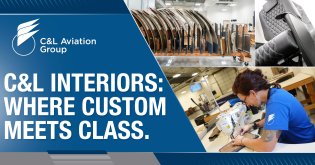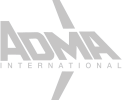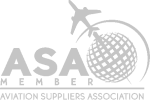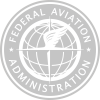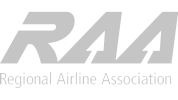
When your aircraft is undergoing maintenance, will you have all the applicable documentation aircraft technicians need? Documentation gives aircraft technicians contextual information for performing maintenance specific to the aircraft. Unfortunately, it’s not uncommon for owners or operators to forget to provide some of these necessary documents during aircraft maintenance – potentially resulting in higher costs and a longer downtime.
As an MRO, we know what aircraft documentation is necessary to ensure maintenance is accomplished efficiently and in accordance with aviation authority regulations. In this article, we provide a quick overview of what documents to include with your aircraft.
Necessary Aircraft Documentation
- Engine and Airframe Logbooks
- Aircraft Maintenance Manual (AMM)
- Aircraft Illustrated Parts Catalog (IPC)
- Aircraft Structural Repair Manual (SRM)
- Supplemental Type Certificate (STC)
- Instructions for Continued Airworthiness (ICA)
- Airworthiness Directive (AD) Status List
- Service Bulletin (SB) & Service Letter (SL) Completed List
- Scratch & Dent Log
- Wiring Diagrams
- List of Major Repairs & Modifications
- Layout Of Passenger Accommodations (LOPA)
- Current Weight & Balance
- Minimum Equipment List (MEL)
Aircraft Logbooks and Manuals
Logbooks and manuals provide information about the aircraft’s airworthiness status and general maintenance procedures. Aircraft technicians need this information to perform maintenance in accordance with the original equipment manufacturer (OEM) and regulatory authorities.
Some MROs will own copies of the aircraft maintenance manual (AMM), illustrated parts catalog (IPC), and structural repair manual (SRM) for airframes they commonly service. You may need to provide access to your specific aircraft serial number, depending on the OEM.
For an airframe the MRO does not regularly provide maintenance on, they will request the aircraft manuals.
Repair and Modification Documentation
Documentation is required for repairs and modifications that have altered the aircraft in any way. Changes made to the aircraft will alter the general maintenance procedures outlined in the maintenance manuals. The documents specifying the changes (usually in the form of an ICA) instruct aircraft technicians on how to accommodate ongoing repair requirements. They are also used for normal or repair requirements of alterations.
Some repairs and modifications are made in accordance with FAA Form 8110-3s (and their supporting documents), field approvals, engineering orders (EO), engineering technical documents (ETD), service bulletins (SB), airworthiness directives (AD), or supplemental type certificates (STC) – many of which require instructions for continued airworthiness (ICA). Unfortunately, these documents are commonly overlooked.
If repairs or modifications have been made to the aircraft, you should provide the ICA and any applicable documentation. These documents may include STCs, AD status lists, SBs, service letter completed lists, scratch and dent logs, wiring diagrams, and lists of major repairs and modifications. In some cases, modifications may be legal under an engineering technical document (ETD) from the OEM, so you may need to provide an ETD, too.
LOPA Modifications
If passenger seating arrangements have been changed, you will need to provide LOPA (Layout Of Passenger Accommodations) documentation. LOPA may be an optional layout in the manufacturer’s manual, part of an STC, or a major modification. The accompanying aircraft documentation identifies the types of passenger safety equipment in the cabin, where they are located, and when they need to be inspected or replaced.
Additional Aircraft Documents
Some types of maintenance may require additional documentation. These may include documentation for the current weight and balance of the aircraft or a minimum equipment list (MEL).
For instance, any repair or alteration that significantly alters the weight and balance of an aircraft will require that the weight and balance documents be updated.
Meanwhile, a MEL lists any inoperative equipment onboard that can safely remain on the aircraft and any limitations required for that equipment. If an item on that list cannot meet the requirement (e.g., is broken, outdated, changed, or altered), the MEL will give correcting requirements and time limits for accomplishing those requirements.

Consequences of Forgetting Documentation for Aircraft Maintenance
Not having the necessary documentation may result in delays. Aircraft technicians may need to either wait to receive the documentation or research the changes made to the aircraft to determine the appropriate maintenance procedure. In some cases, aircraft technicians must dismantle more of the aircraft to better assess the situation. This prolongs aircraft downtime, which can prove costly for operators and owners.
There may be additional costs if aircraft technicians need to conduct research or acquire new documentation or certification.
If possible, always provide applicable documentation and certification. If you’re uncertain what documents should accompany the aircraft during maintenance, ask your MRO contact to determine the required aircraft documentation.


